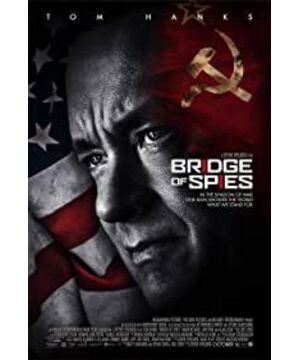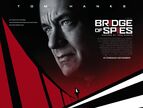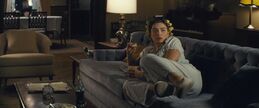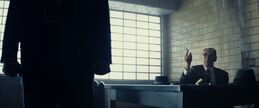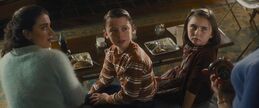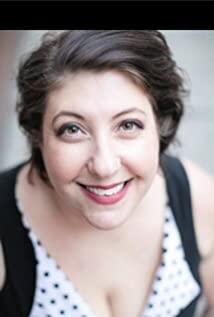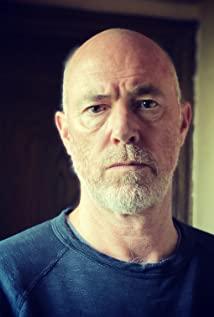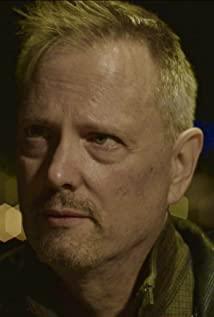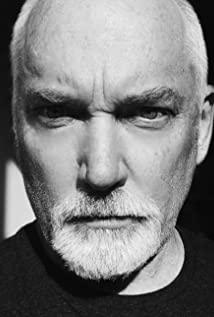Scene 1. Spy paints at home
The 1st mirror scene: from a single close-up to a three-person close-up. Movement: The interpretation of a rear-view camera, the figure is gradually pulled from the mirror to the close-up view of the back, and the three main visual elements of the back, the painting, and the mirror are presented in the picture. Depth of field: large depth of field, there is a small shadow figure passing by outside the window, the focal length of the lens is estimated to be 40mm. Angle: The vertical angle of the overhead shot represents a weak person; the back and side and front portraits represent the multi-faceted person. Space: A window in the room, the room is very dark, the window is very bright, the representative character is dark, but the heart is longing for the light. Objects: mirrors, paintings, and sundries show the characters seeking tranquility in chaos. Characters, from not in the mirror, to in the mirror, to not in the mirror. Sounds: trains, cars, chairs.
Mirror 2: Close-up. Movement: Almost a fixed camera position, but the camera moves slightly up and to the right as the character leans back. When the character is close-up in the lens, when the character has the possibility of being out of the frame, the lens needs to move with it. Depth of field: The change of focus. At the beginning, the focus is on the painting. When the character gets up when he hears the sound of the phone, the focus shifts to the character and the painting is out of focus. The focal length of the lens is estimated at 85mm. Angle: It is still the back view, and it is still the top view angle. The angle represents the audience's attitude towards the character, and unless the attitude changes, there is no need to change the vertical angle. Voice: The phone rang, but the character didn't seem to hear it. The second time it rang, the character listened intently.
Scene 3: The large panorama is close to the medium shot, which means an important call has been received. Angle: The character goes from the back to the side and then to the front, showing the richness in the movement. This is the first time the character makes an official appearance. From the perspective of looking up, it has become the perspective of looking up, which means that the audience's attitude towards the characters begins to change. Movement: First the frame is fixed, then it starts to move, bypassing the clutter in the painting room, and finally there is a push-forward shot that represents emotional tension. Pushing the camera forward is not deliberate, because the character is answering the phone. If the character does not move, and there is no information to push forward, it will be relatively dry and meaningless. Character: Although he didn't say a word, he used enough white space to give the audience room for imagination. Combined with the following plot, the character is a spy, but he is given the identity of painting, which increases the density and credibility.
Scene 2. Painting on the street outside
1st shot: panorama to medium shot. Movement: Telephoto from the train overhead to the person pushing out the door, and then pan again as the person approaches the camera. Depth of field: large depth of field, wide-angle 24MM head, showing the relationship between characters and the environment, the studio downstairs is a lively market. Angle: Shoot upside down at a low angle, and get a video with a different aesthetic. Editing: It is connected with the second shot. The first shot does not appear in the painting. When the frame falls, the character lives in the painting. When the second shot starts, there is a process of entering the painting. Therefore, when a character is walking on a road, the character can be photographed in the painting in the first picture, and the character in the second picture can be re-entered into the painting. And the characters in the second picture are not completely drawn, but two foreground characters who hurriedly walk past the camera are arranged to block the picture. When the first shot starts, the character needs to be drawn; when the first shot falls, the character does not need to be drawn, but it is better to withdraw if there are other characters. People: When going out, I designed an action of looking to the right, wiping my mouth with a handkerchief, and then looking left again after walking two steps. Too flattering. Voice: At the beginning there is the sound of the train, which foretells danger. Space: The studio is located under the train bridge. The place where I should paint quietly is not very peaceful, so it is dangerous.
The second lens type: With a 24 wide-angle lens, it changed from a close shot to a medium shot to a large panorama. Movement: The shot has a downward pan, from the character's shoulder, moving away as the character moves forward, to the mid-range, and as the character moves away, it eventually becomes a large panorama.
The third mirror view: the distant view. Angle: Top shot. Shooting method: fixed camera position. Depth of Field: Large depth of field. Edit: The characters are in the painting at the beginning, but the perspective is smaller.
The 4th mirror view: from the distant view to the close view. Shot: Left-shifted motion shot, with a car set between the main character and the new character, moving directly from the main character to the new character. Characters: The new characters get off the taxi and walk to the other side behind the main characters, forming a hierarchy.
Session 3. On the subway and at the subway station
1st shot: from the newspaper held by the secondary character, to a close-up shot of the character, who is pretending to be reading a newspaper. Then the camera pulls back and more prop characters appear, until it finally stops at the close-up position of the main character. Then the character gets out of the car, the camera changes from the front to the heel, and the secondary character gets off the subway from the front door, and the camera encounters it again. The shot changes to a secondary character in a close-up in the heel, and the main character is shot over the shoulder. With the two beauties approaching, the camera pans back to the prop figures behind the secondary characters. After the prop characters dodge, the main characters appear again, and the camera changes from the front to the back
The second mirror scene: medium and close-up (thigh part). Photography: front heel. It stands to reason that this shot is the most straightforward, so this shot is very short, only 2 seconds and 17 frames. As far as the walking sports shot is concerned, if it is a medium shot to the knee, the mood is too flat, but the close-up is too tight, so this shot takes a medium close-up. Editing: The previous shot is 43 seconds long from the subway to the platform. This shot is only 2 seconds long. The previous shot moves very complicatedly. This shot is very simple. Played the role of Dinghai Shenzhen.
The 3rd mirror movement: side to the front heel, side to the side, change to the heel, flip the camera to become the front heel, and side to side again. A long shot of 10 seconds, two shots.
4th Mirror Movement: The secondary character changes from a close-up front heel to a side-to-side distance.
The 5th lens movement: the main character is followed by the lens, which is also the subjective lens of the secondary character. Scenery: Medium and close-up (waist line).
6th shot movement: secondary characters followed by shots. Scenery: close-up.
The 7th lens movement: the main character is followed by the lens, which is also the subjective lens of the secondary character. Scenery: close-up.
The 8th mirror movement: first a push forward, then it becomes a front heel shot. When the character turns to look back, he moves sideways and turns into a heel. Scene difference: from mid-ground to close-up, and back to mid-close-up again
9th lens movement: The front heel shot changes to a left panning, and then the back changes to the heel.
……(to be continued)
View more about Bridge of Spies reviews


